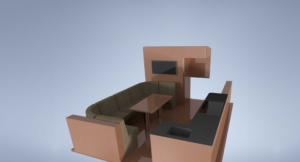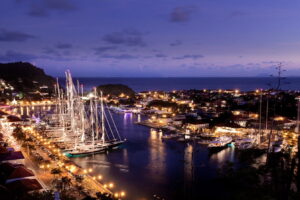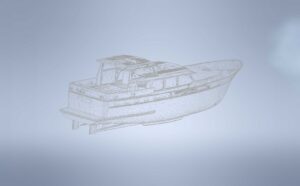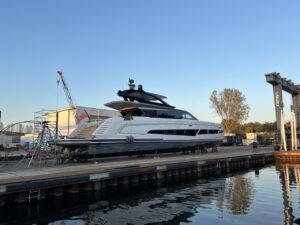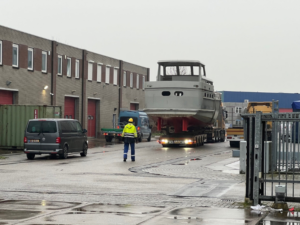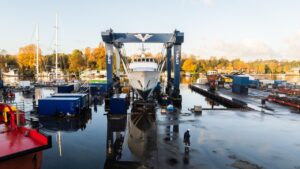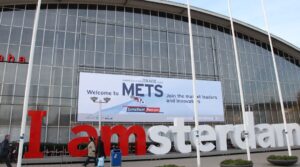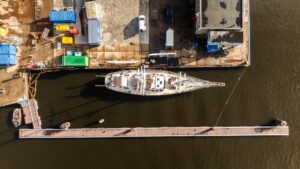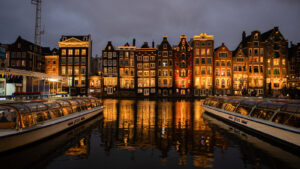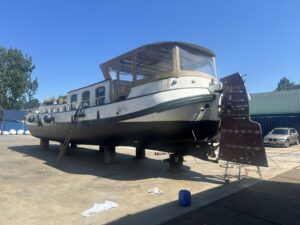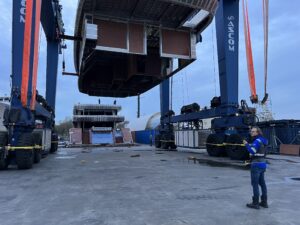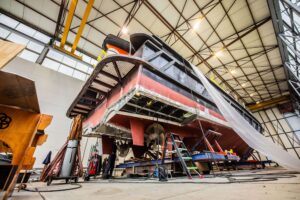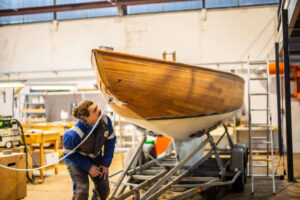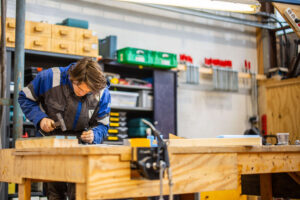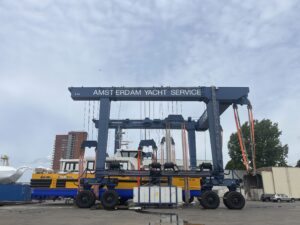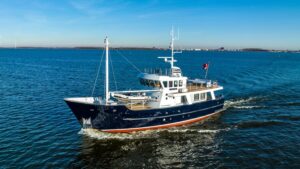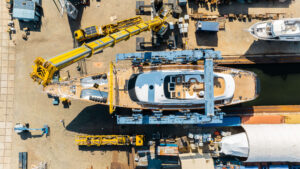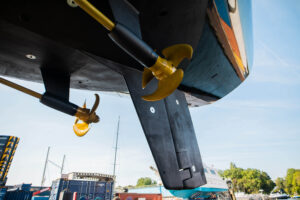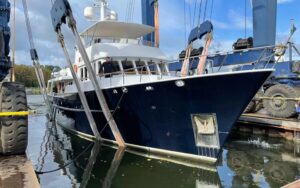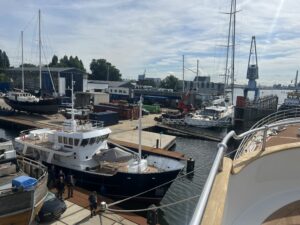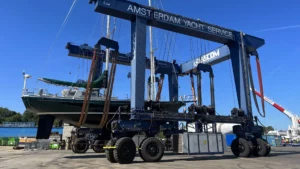Does an old hull mean you have to settle for old tech? Amsterdam Yacht Service says no, and they are set to prove it as they take on a 25-year-old, part-completed 17-metre Pieter Beeldsnijder steel hull, re-imagine the build, and re-engineer the design to skilfully blend classic style with modern hybrid systems and amenities. Follow the AYS team through each stage of the process as they work from the purchase of the hull through to the launch of the completed (re)build.
If there’s one thing we’ve learnt here at Amsterdam Yacht Service after decades of experience working on commercial and, in recent years, yacht and superyacht refit and rebuild projects, it’s that you don’t always need to go for the most high-tech solution in every aspect of the vessel. Sometimes it’s just not necessary, and only adds needless complication to a project.
It’s that experience that we have been applying to our classic Pieter Beeldsnijder 17-metre, 20-year-old steel yacht hull project, which we acquired last year and which we are in the process of taking from part-completed hull to stunning finished yacht. It’s particularly pertinent as we consider how to update the design by remodelling the aft end following our extensive 3D-scanning of the yacht as it stands now.
We are considering three variants that we know will appeal to a modern market but which will also take care to preserve Beeldsnijder’s original lines and ensure she runs with no loss of speed or fuel efficiency. Of course, we are also considering not changing anything at all!
“In terms of underwater body, really there are only two variants – whether we create an extension or whether we leave her as she is now,” explains Robert Binnekade, managing director of Amsterdam Yacht Service. “At the moment she has a conventional trawler-yacht style stern with a vertical transom. If we extend the hull, then we can consider elements that include not only the aesthetics, but also the practicalities, such as access to the water and whether or not to have an integrated tender garage.”
The team has already considered the hull extension and has run all the calculations to ensure the yacht will be hydrodynamically efficient and will not suffer in terms of seakindliness. We have also made the easy decision not to try to complicate things by adding stabiliser fins.
“She has a traditional displacement hull, and in that sense everything is very straightforward,” says Binnekade. “We don’t need to run full computational fluid dynamics (CFD) for the hull because there’s nothing out of the ordinary to consider – she’s not a high-speed vessel, and she will run with conventional shafts and fixed propellers. If we do add stabilisation, it will be a gyro, which of course is mounted in the hull and therefore doesn’t have appendages to consider.
“I think that’s the choice you always have with a refit project – you need to know when to go above and beyond and go super high-tech, and when not to because it’s not necessary,” he continues. “As humans we’ve been building boats for hundreds of years, and it doesn’t have to be complicated. At AYS we do have 3D-printers for fast prototyping and we do utilise detailed 3D-scanning and CFD when appropriate, but ‘expertise’ is also about knowing when to implement each tool. You need to know not just how to do something, but why do it, and to understand the best – and sometimes the least complicated – way to achieve your desired result.
“I think that’s what makes AYS so special,” he concludes, “because we can do the complex things when it’s needed, but we also know when we can achieve the desired result using simpler methods. That’s also what this beautiful yacht project is all about – retaining her classic Beeldsnijder looks while adding modern convenience with a minimum of fuss. Simple!”







